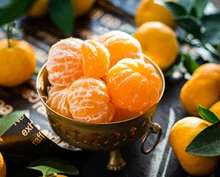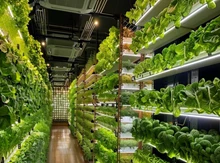
“2 Kgs of Guava, half Kg Peas, and lettuce or carrots,” grins my Grandma as she plucks the ripened fruits and vegetables from her lush green garden. Yes, not everyone is as lucky as my Grandma, including myself. This thought had emanated in my mind when I visited her earlier this year. Yes – a fruit/vegetable garden of one’s own, especially in cities can be a win-win situation. On one hand a constructive hobby will be nurtured, on the other it will reduce your monthly budget as you will be have these supplies, from your garden. Here are the top five fruits and vegetables that you can grow indoors conveniently, and for this there is no need for a huge terrace or balcony: all that is needed is a little space right inside your home for these useful plants. It is important to note that no special gardening skills are required for cultivating them.
Best Vegetables to Grow:
Garlic:
Garlic is used regularly as a base for cooking. Use the seeds of garlic and not garlic bulbs that you purchase from the market.
Radish:
Sow the seeds of radish in spring and then thin the seedlings gradually so that the roots can get some space for proper growth.
Carrots:
Carrots are consumed largely as salad or for cooking savory dishes, also used in desserts. The tops of the carrots will pop out from the soil in no time, after carrot seeds are sown. This is the right stage for the harvest.
Lettuce:
Leaf lettuce grows quite rapidly therefore after planting, you don't even have to wait much for consuming them. Be it burgers, salads or sandwiches, most of us prefer eating raw lettuce leaves in salad, mainly due to its fresh flavor.
Peas:
Peas are one of the most commonly used vegetable in every household. Plant the seeds early during the spring time and arrange a support for the climbing plant, which can be done with a small trellis made of wood, bamboo or metal.

Best Fruits to grow
Guava:
Guava trees can reach heights of 30 feet (9 m.), when grown outdoors but trees grown in pots or home gardens are generally much smaller. Most varieties flower and set start yielding fruits after 4-5 years roughly. To grow guava first choose a pot having of 7-10 inch upper diameter and drainage holes. Fill about 1/3 pot with well drained soil which is rich in organic content and place the plant in the center of the pot. Then fill the remaining pot with same soil. Keep the plant in indirect but bright location of light, for 2-3 days. After this move the plant to a location that receives more than 6 hours of direct sunlight. Once the plant is overgrown in current pot, you can plant in your garden.
Mulberry:
Mulberry Plant is grown by seeds and cuttings. The plant requires more than 6 hours of direct bright sunlight and soil should be well drained, fertile and nutrient rich. Temperature requirement is 20-28 degrees for proper growth while harvest seasons are October-December and June-July. Apply organic fertilizer once a month during the main growing season (August-October and February-March). Water the plant when 1-2 inch of the surface soil layer feels dry when touched.

Pomegranate:
Keep the plant in natural indirect bright Light condition. More than 6 hours of direct bright sunlight a day is ideal for proper growth. Before the application of fertilizer, loosen the topsoil without disturbing the roots of the plant so it can take the nutrients and moisture easily. Applying organic fertilizer during the main growing season i.e. June-July is recommended. Apply water immediately after application of fertilizer. The soil should be well drained and fertile, rich in organic content and desirable temperature is 25-30 degrees.
Oranges:
Soak the seeds overnight in water and choose a pot having of 7-10 inch upper diameter and drainage holes. .Fill about 1/3 rd pot with well drained soil which rich in organic content, and place the plant in the center of the pot. Remaining 2/3rd of the pot is then filled with same soil. The plant is kept in indirect but bright location of light, for 2-3 days. Then it is gradually moved to a location that receives more than 6 hours of direct sunlight. Once the plant is overgrown in current pot, it can be planted in the garden.
Lemon:
Moisten the potting soil so that it is damp, but not soaked, all the way through. Fill the smaller pot with soil, all the way up to an inch below the rim. Remove a seed from a cut lemon. Plant the seed about half an inch deep in the middle of the pot. Spray the soil that is directly above the seed gently with water from a spray bottle. The pot is covered with clear plastic wrap; its edges sealed with a good rubber band, small holes are created in the top with a pencil and the pot is then placed in a warm, sunny location. Water is sprayed occasionally, not allowing the soil to dry out. After about two weeks, when the sprouting is noted, take the plastic covering off. Make sure the young plant gets at least eight full hours of light per day, and moderate doses of organic fertilizer like compost are to be given. Attacks by bugs or diseases to be avoided and dead leaves are pruned off when necessary.
Creating your own kitchen garden will be the best idea in case you are worried about consuming adulterated foods with harmful chemicals, fertilizer residue or artificial colors. You can grow number of fruits and vegetables at home and enjoy fresh and organic food but you should be well informed about which fruits and vegetables are easiest to grow indoors. With careful selection of cultivars and appropriate growing methods, growing many fruit plants in containers is viable. But planning for a vegetable garden is feasible if you have an outdoor area with enough space, and it gets a good amount of sunlight.











